SickKids ‘Life Unpaused’
Cause (GOLD)
Client Credits: SickKids Foundation
Lori Davison – VP, Brand Strategy and Communications
Kate Torrance – Director, Integrated Brand Marketing
Mark Jordan – Director, Digital Projects
Lisa Charendoff – Manager, Patient Ambassador Program
Harleen Bhogal – Marketing Manager
Agency Credits: Cossette
Chief Creative Officer: Carlos Moreno
Chief Creative Officer: Peter Ignazi
Associate Creative Director: Jamie Cordwell
Art Director: Jessica Wong
Copywriter: Darrel Knight
Senior Interactive Designer: Gustavo Oregel
Agency Producer: Heather Moshoian
Account Executive: Olivia Figliomeni
Account Director: Hanh Vo
VP, National Brand Director: Steve Groh
SVP, National Client Lead: Andrea Cook
Director, Strategy: Kevin McHugh
Chief Strategy Officer: Jason Chaney
UX/CX Coordinator: Thomas Wilkins
VP, Experience Strategist: Tara O’Doherty
VP, Product & Technology Strategy: Joe Dee
Technology & Innovation Partner: Hoffman Digital
Technical Director: Dominic Gignac
Lead Developer: Clément Guillou
Production House: Skin & Bones
Director/Cameraman: Mark Zibert
DOP: Andy Fererra
DOP: Marco Baldonado
Producer: Joan Bell
Editing House: Saints Editorial
Editor: Danica Pardo
Assistant Editor: Cam Lasovich
Transfer Facility: Alter Ego
Online Facility: Alter Ego
Audio House, Eggplant : Media Agency, Cairns Oneil
Section I — CASE PARAMETERS
| Business Results Period (Consecutive Months): | November – December 2015 |
| Start of Advertising/Communication Effort: | (November, 2015) |
| Base Period as a Benchmark: | November – December 2014 |
| Geographic Area: | GTA, Ontario, Canada. |
| Budget for this effort: | $100,000 – $200,000 |
Section IA — CASE OVERVIEW
Why should this case win in the category (ies) you have entered?
We showed six emotional videos of sick kids fighting for their lives – but with a catch. The videos would start to play then suddenly pause. They required an immediate response to donate to see the rest of the video. Upon donation, the viewer would get instant gratification by seeing the positive transformation of the child. It was the first time ever that a call-to-action was used in the middle of a video. This led to the creation of a donation mechanism that had never been built before.
Section II — THE CLIENT’s BUSINESS ISSUES/OPPORTUNITIES
a) Describe the Client’s business, competition and relevant history:
Annually, SickKids releases a fundraising campaign during the holiday season to raise crucial funds that allows the foundation to continue to make advancements in child health. Past campaigns have consistently set the bar higher for donation generation and breakthrough potential, making it difficult surpass year-over-year. Our mandate was to build on the success of the 2014 brand campaign, and find a new way to raise record-breaking donations during the busiest time of year: Christmas.
b) Describe the Client’s Business Issues/Opportunities to be addressed by the campaign:
The holiday (Christmas) season is an especially lucrative time of year for charities – people are most likely to donate to their preferred cause at this time of year. However, it’s also a cluttered and busy time of year, making it especially challenging to break through.
Despite this, SickKids campaigns have historically led the competitive set, and continue to improve their own donation results year-over-year. This year, we were faced not only with the lofty goal of raising record -breaking donations, but doing so in a fresh way using last year’s assets – the children from the ‘Better Tomorrows’ 2014 campaign.
c) Resulting Business Objectives: Include how these will be measured:
Our communication objective was to ensure that SickKids was a priority recipient of donations during the holiday season by keeping the brand top-of-mind and inspiring engagements.
The business goal was to increase YOY online donations by 10%.
Section III — YOUR STRATEGIC THINKING
a) What new learnings/insights did you uncover?
The 2014 campaign was effective at making viewers feel something but it drove average donations; in 2015, we bridged the gap between “feeling” and “doing” by making progress feel attainable and imminent. Through research, we found that one’s propensity to donate increased as the achievement of a goal feels more tangible. If we could help prospective donors believe they are contributing to a tangible solution where a solution is imminent, the more likely they will be to participate. We sought to make progress feel attainable, and highly personal, by giving participants the opportunity to attribute their donation to the progress of a specific child, and give them an immediate and personal payoff for their generosity.
The findings from research laid the groundwork for the insight: when a child becomes sick, their entire life is put on pause – from playing sports, attending school, to being with family & friends – everything is put on hold. We wanted to bring this struggle to life for parents on social media, and give them not only a unique reason to donate, but also a unique experience to share.
b) What was your Big Idea?
We aimed to bring to life a simple truth for patients at SickKids, “When a child is diagnosed with an illness, their life is put on pause”. We wanted to create not only a unique reason to donate, but also a unique experience to share.
c) How did your Communication strategy evolve?
Video and custom content pieces were utilized to educate, influence and deepen the emotional connections acting as a conduit to build deeper engagement; Lower engagement tactics (i.e. banners) placed through both premium and programmatic partners allowed us to maximize campaign reach and maintain efficiencies.
Our media weighting and creative rotation was continually optimized, based on donation levels per child, media engagement rates, and on-site behaviour. As stories were “unpaused” (i.e. donation goals were reached) on site, we adjusted the creative rotation and weighting accordingly, to ensure that all children received comparable exposure, and an equal opportunity to achieve their donation goals.
d) How did you anticipate the communication would achieve the Business Objectives?
Our target included men and women 35+ skewing more female than male, with children living at home. We targeted them on social media through engaging and innovative videos that leveraged a technology that has never been done before – a CTA midway through a video. The content encouraged conversation, sharing and donations by pulling on heartstrings and relating to people with children and families of their own. Potential donors were also able to see the “social proof” of others who had already made a donation, by having the names of previous donors appear below the video bar – giving them a sense of being part of something bigger than just themselves.
Section IV — THE WORK
a) How, where and when did you execute it?
We built on the 2014 campaign by following up on six patient stories one year after they were introduced to the public. We started the videos with 2014 footage but with a twist, the video would pause and prompt the user to donate to literally unpause a child’s story. Immediately following donation the video would resume with new footage of the child living a normal healthy life at home.
Creative reference:

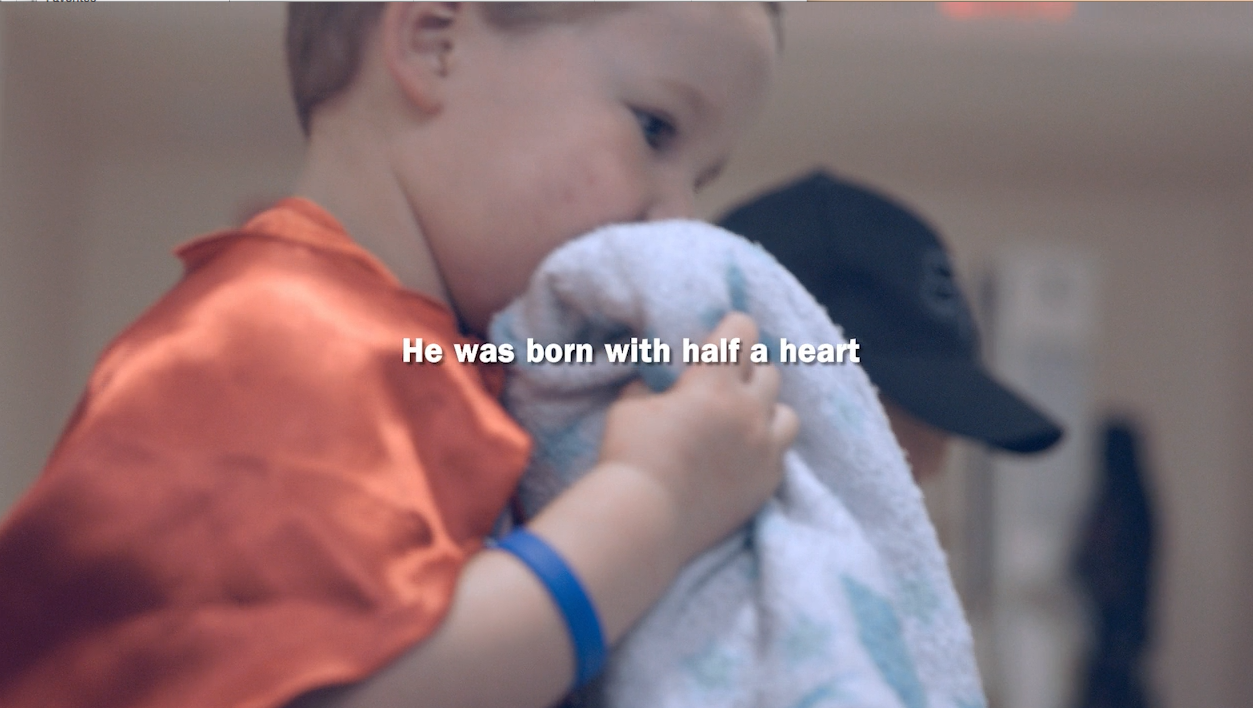
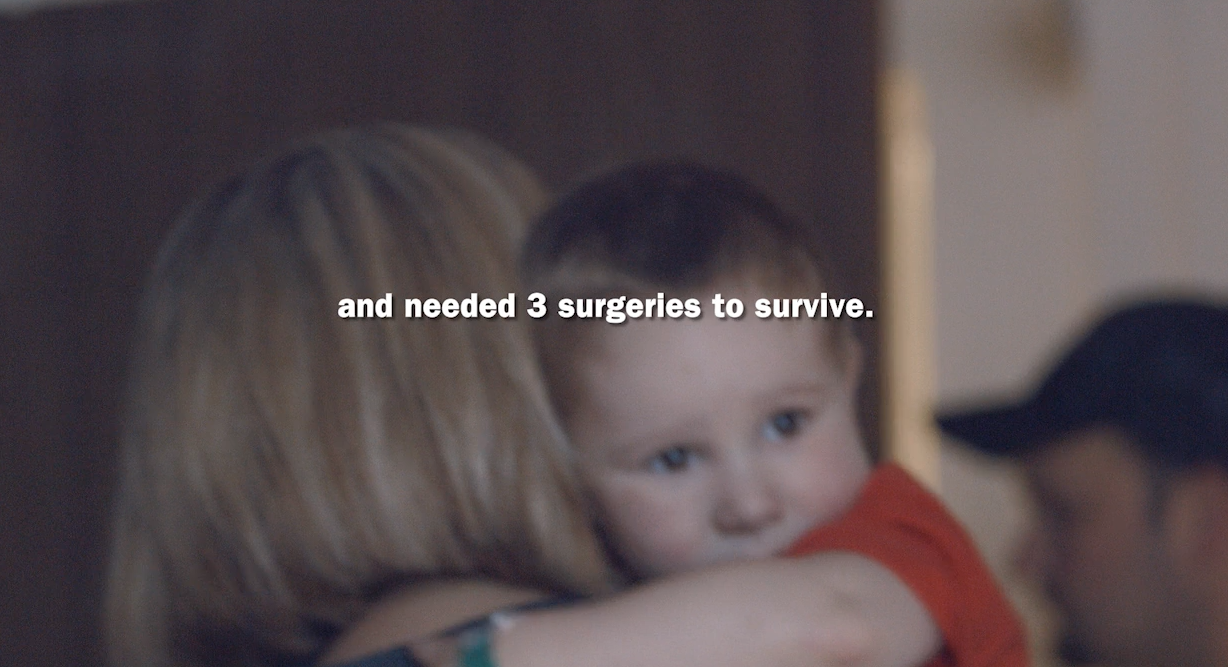
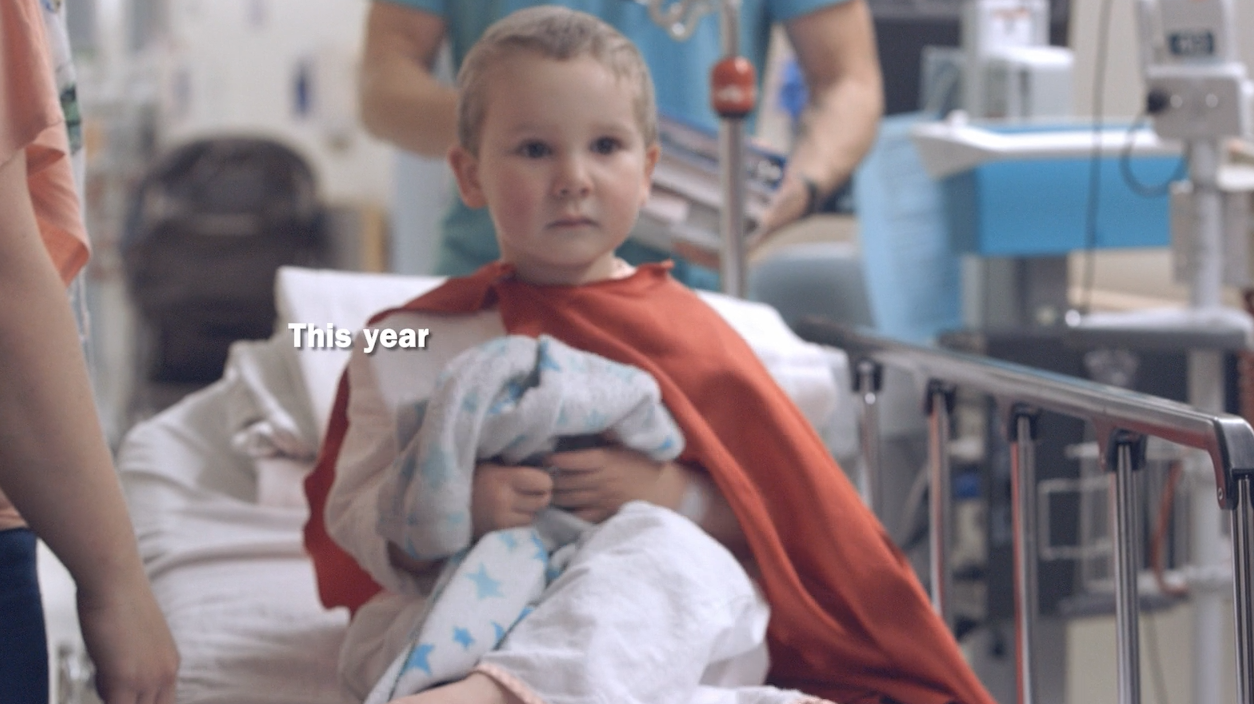
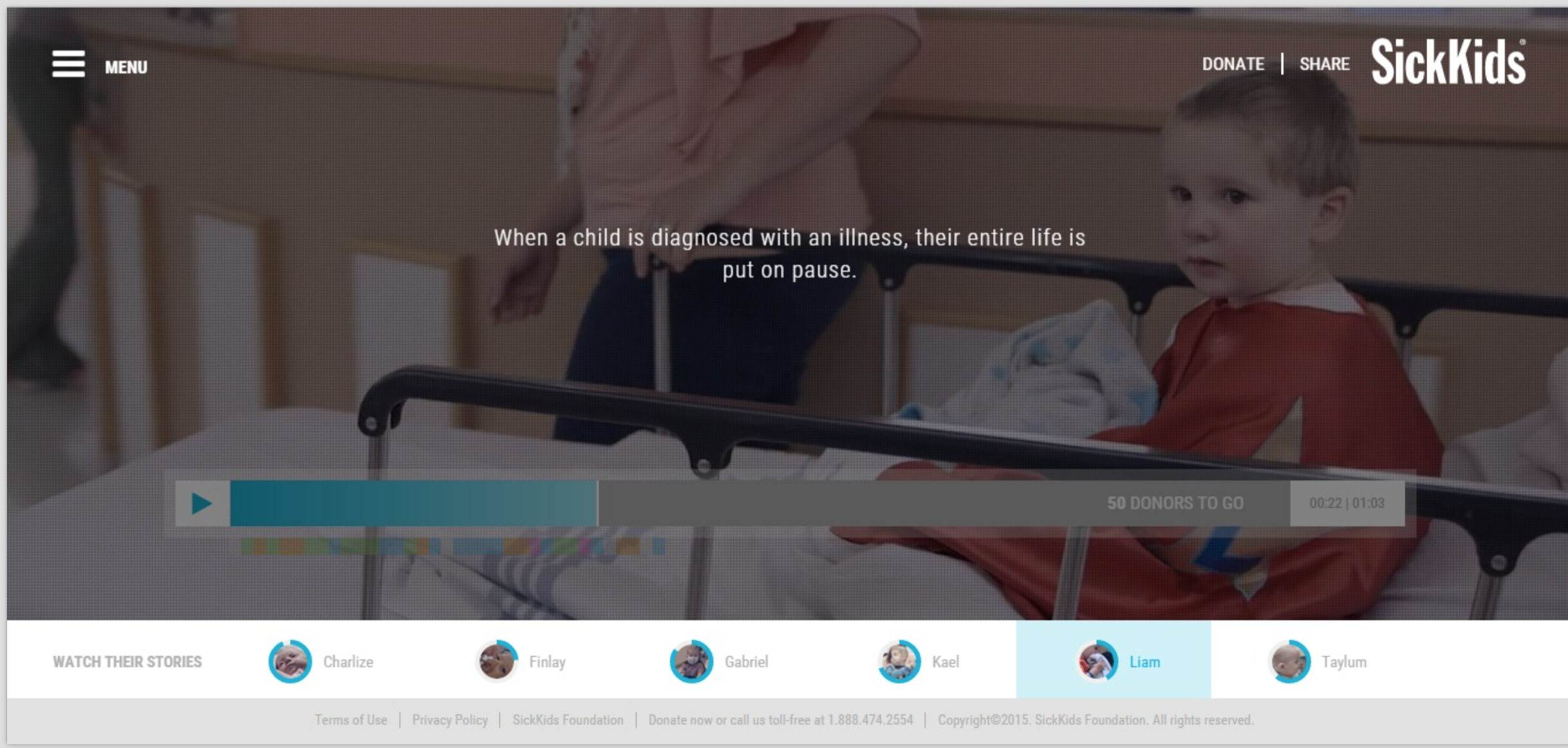
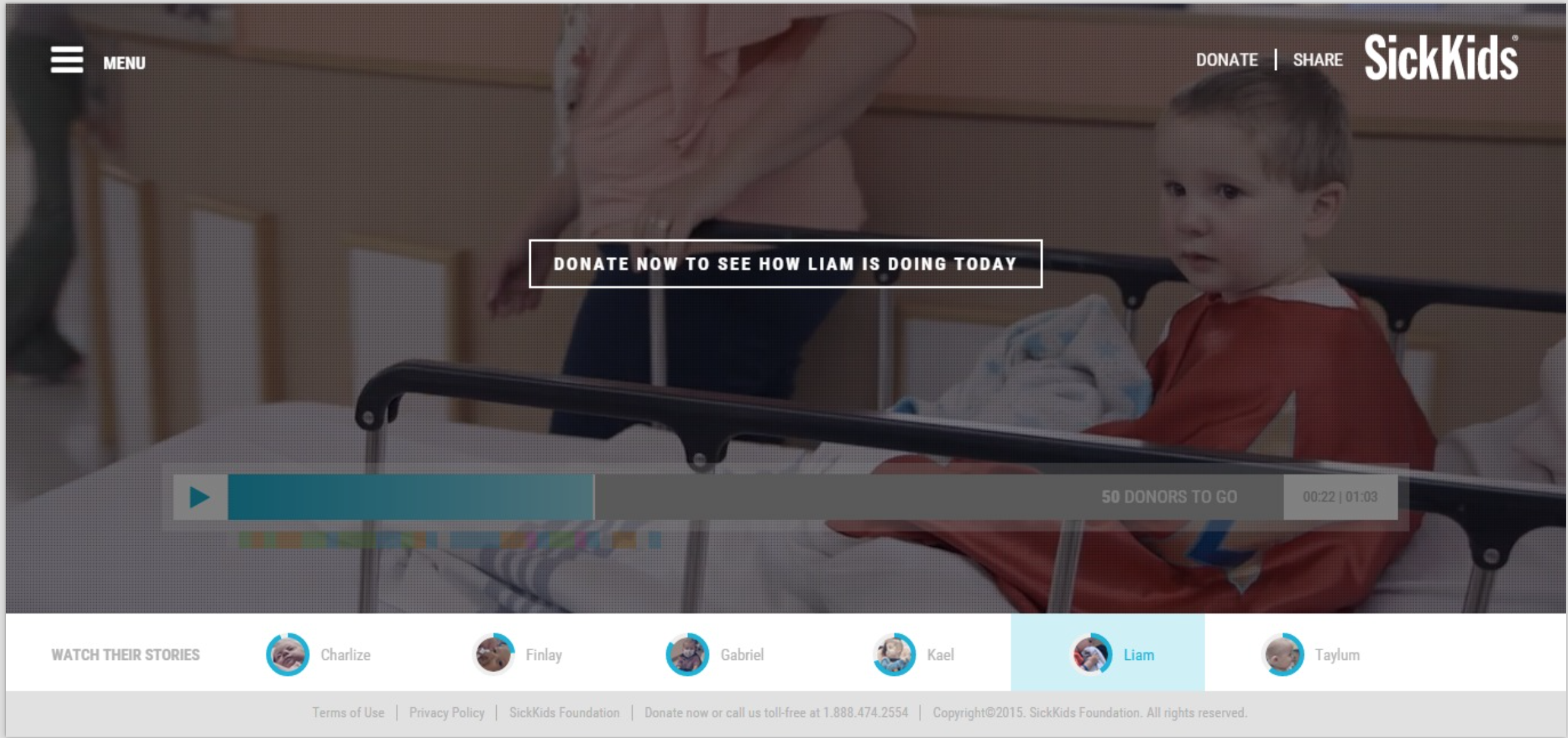
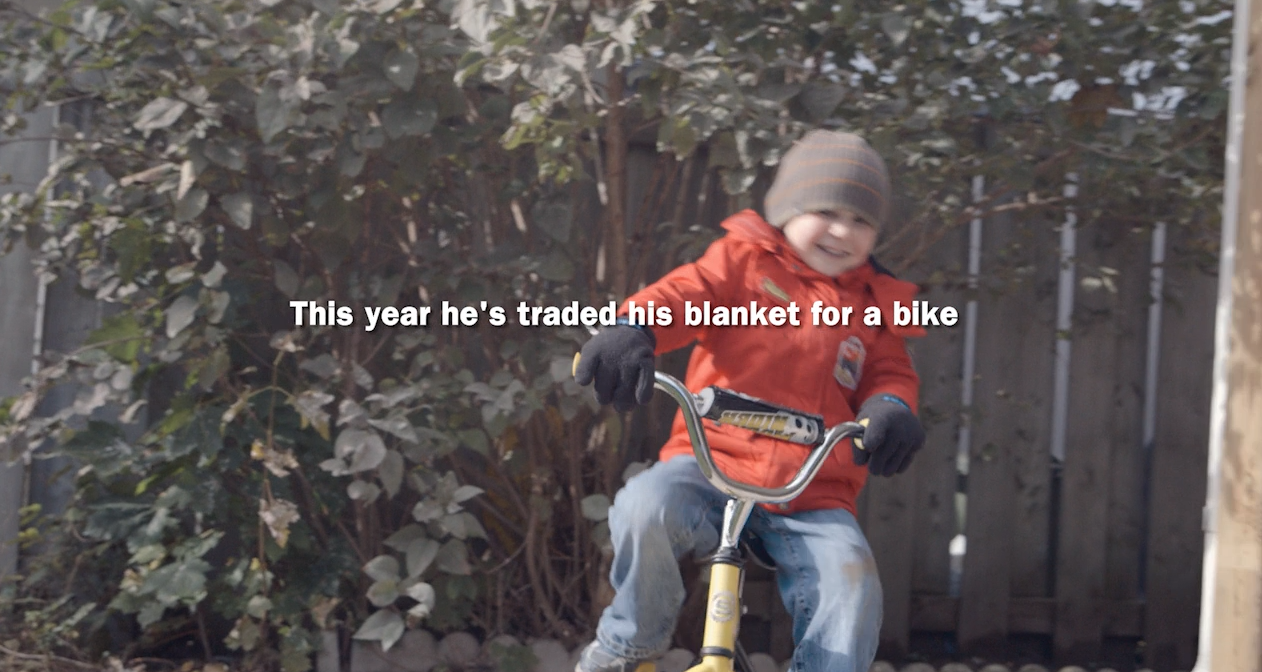
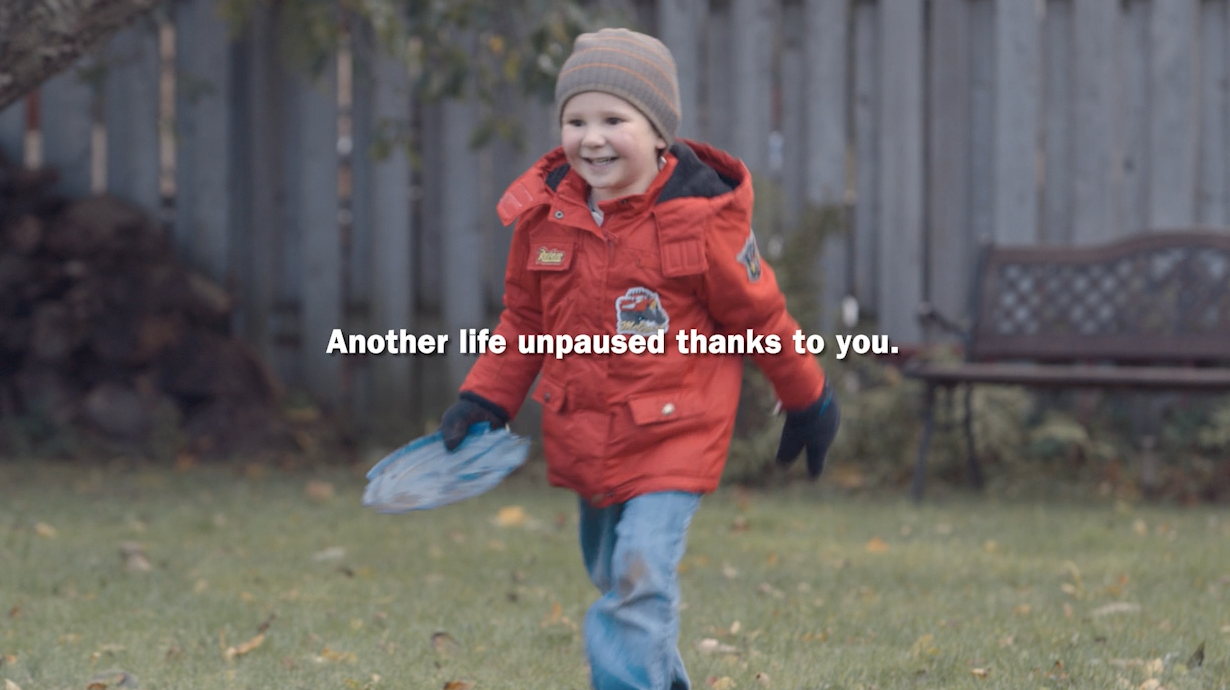
c) Media Plan Summary
We used a range of integrated media to raise awareness: Using TV, banners, pre-roll and social media during November to December 2015.
Digital employed a mixture of video, display, custom rich media and native units. Video and custom content pieces were utilized to educate, influence and deepen the emotional connections acting as a conduit to build deeper engagement and ultimately drive donations. Display banners through both premium and programmatic partners allowed us to leverage efficient tactics to help maximize campaign reach and maintain efficiencies.
Section V — THE RESULTS
a) How did the work impact attitudes and behaviour?
The campaign was successful not just in generating action, but it had a positive effect on awareness, recall, and intent. 60% of GTA residents say they remember seeing at least one of the ads or other similar ads from the campaign, which was a 9pt increase from 2014, and an improvement over previous years with larger budgets and wider reach. Those who recalled the campaign had greater awareness of SickKids had a stronger overall impression of SickKids and were more likely to donate to SickKids in the future. See chart below.

On social media, the two minute spot was SickKids highest performing post to date on Facebook and reached more than 4 million people gaining over 72,000 interactions. Overall, the campaign generated 74.5 million impressions and significantly increased donors perspective of the brand as well as likelihood to donate as the campaign significantly increased the understanding of the impact of donation dollars.
b) What Business Results did the work achieve for the client?
The campaign was an overwhelming success: SickKids not only met the record-breaking online donation totals achieved in 2014, but exceeded the goal of 10% online growth by 20% and increased overall donations by 32%, an additional $12 Million during the same donation period. , This resulted in the highest donation period in the history of the foundation, $49 Million. Most notable, the strategy even succeeded to increase the average online donation amount by 50%, which led to another record-breaking feat for the foundation.
c) Other Pertinent Results
The campaign was not only successful at achieving it’s direct objectives (increase in donations), but it also made an impact on key brand health metrics, significantly strengthening the overall impression and desired brand image of SickKids, and increased people’s likelihood to donate. See chart below.
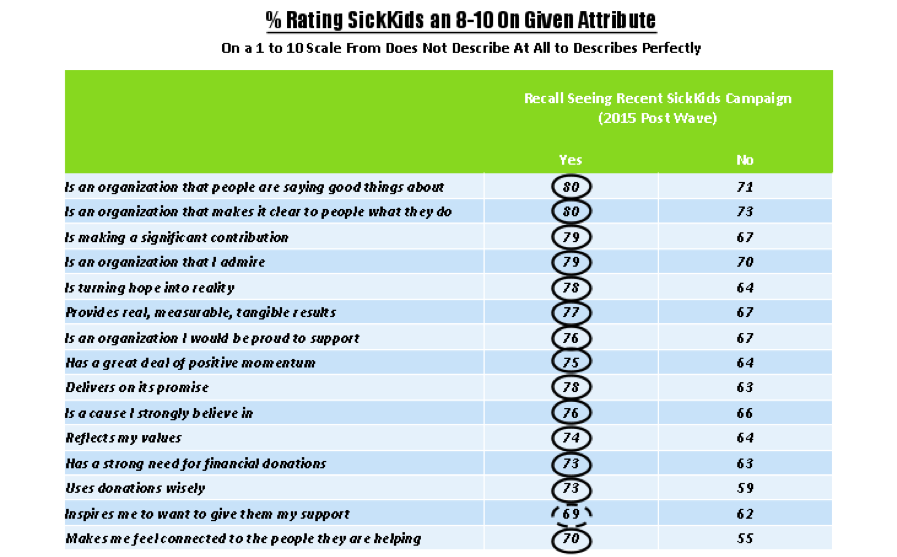
The uniqueness of our approach in triggering donations was picked up by major news outlets as well which generated an additional 63 hits and over 19 million media impressions.
d) What was the campaign’s Return on Investment?
Benefitting from additional media value and social uptake, the campaign achieved a 26x ROI, based on total donations during November to December 2015.
Donations raised $49 million for the hospital, which was the highest donation period ever in the history of the foundation.
Section VI — Proof of Campaign Effectiveness
a) Illustrate the direct cause and effect between the campaign and the results
2014 was a record year for SickKids; in 2015 during the same time period, with the same conditions as in 2014 and for a similar budget, we were able increase online donations by 20% and overall donations by 32% resulting in the highest donation period ever in the history of the foundation.
b) Prove the results were not driven by other factors
Campaign spend vs. history and competition:
2014 was a record year for SickKids; in 2015 during the same time period, with the same conditions as in 2014 and for a similar budget, we were able increase online donations by 20% and overall donations by 32% resulting in the highest donation period ever in the history of the foundation.
Pre-existing Brand momentum:
N/A
Pricing:
N/A
Changes in Distribution/Availability:
N/A
Unusual Promotional Activity:
N/A
Any other factors:
N/A